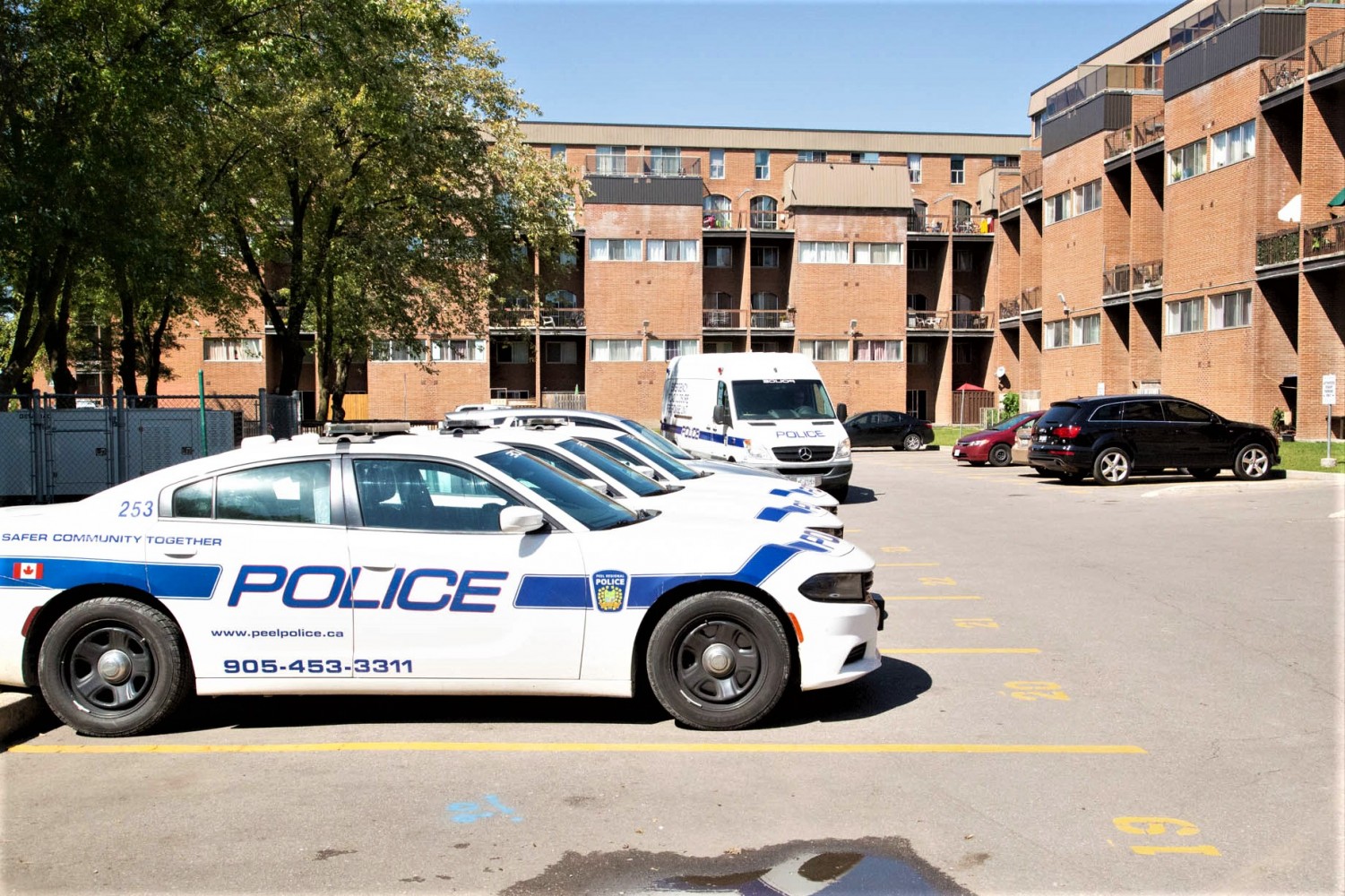
As blood spills on the streets politicians and the public grow frustrated in their search for answers
Brampton Mayor Patrick Brown and Mississauga Mayor Bonnie Crombie know all about crime in their two cities. They sit on the Peel Police Board. They see information often shielded from the public. As violent attacks are on the rise, they know how poorly funded policing in the region is. They often have to send condolences to families and look them in the eye after members are extinguished by gun and gang violence.
After a murderous few days that left two dead and seven others wounded, Brown’s frustration spilled out in a tweet. He suggested gang activity in the region is spreading here from Toronto. John Tory, the neighbouring mayor, took offence, pointing out that such remarks, no matter how frustrated his counterpart might be, are not constructive.
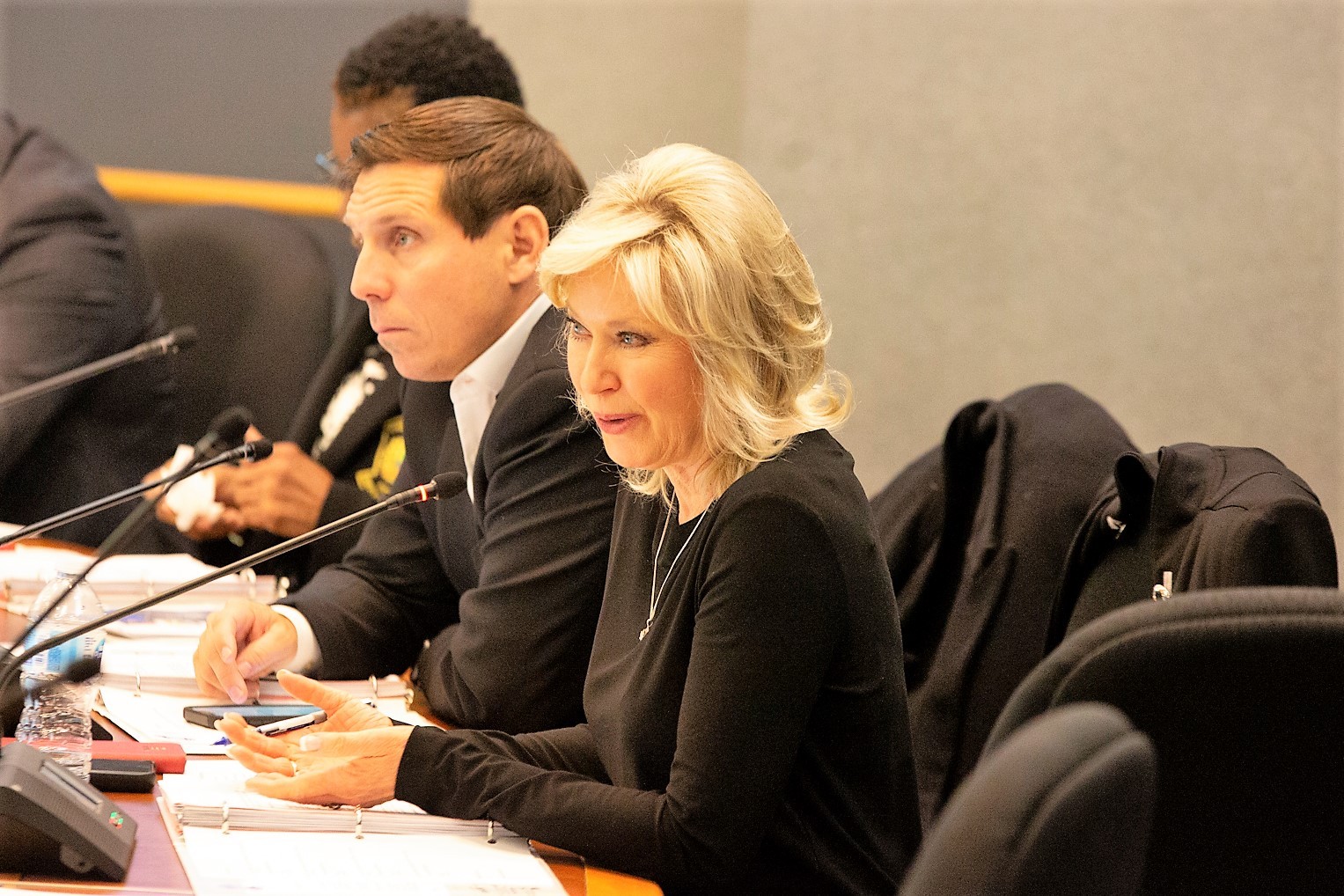
Mayors Bonnie Crombie and Patrick Brown at a recent police board meeting
But gang activity is a confounding problem. In 2016 the province reported that 54 percent of firearm-related homicides were linked to gang activity. Most occur in a relatively small number of urban areas.
"Gangs don't respect postal codes," Brown told The Pointer Wednesday. "Sixty percent of our shootings in 2019 have been gang related. We don't get the provincial funding for combating gang activity that Toronto gets. I am not going to sit quietly on my hands and not speak out. We must speak the truth. Enough is enough."
On Wednesday Crombie said the problem is not just a Peel one or a Toronto one.
“It’s not a type of crime that recognizes jurisdictions, or boundaries, or borders,” she told reporters inside city council chambers. “These gangs operate right across the GTA. It’s not a Toronto issue; it’s not a Peel issue. It’s right across the GTA.” And it’s clear that a coordinated effort across the region, involving all municipalities and police forces, and the two higher levels of government, is what’s needed.
For Brown, the crime wave might pose new challenges as a leader.
Throughout his two-decade political career he represented the Barrie area, before winning the Brampton mayor’s job last year. He had to deal with crime, from a distance, as an MP and Ontario PC leader. But now, as mayor and a police board member, he has to deal with crime up close. He hears every day what’s happening in his city and from residents who are screaming out for help.
The violent crime index that measures the most viscous attacks in Brampton and Mississauga worsened at three times the national rate between the start of 2014 and the end of 2018. The past few days have seemed even worse.
Everyone seems to be searching for answers. But the grisly gun crime keeps spreading. Brown’s tweet was clearly a call for help. The two cities need some, desperately.
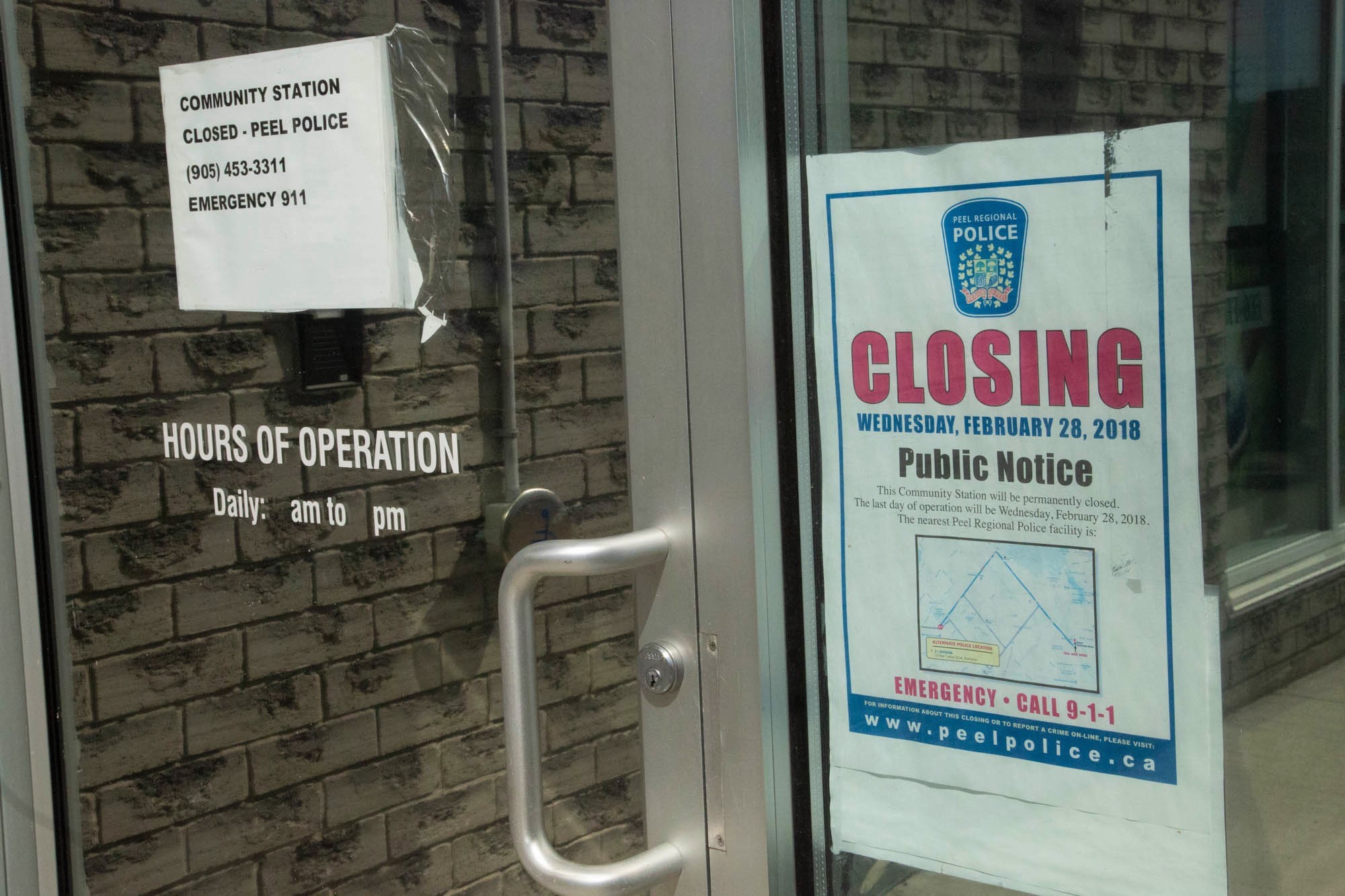
The Malton Community Police Station closed last year
Brampton and Mississauga have about 140 police officers per 100,000 residents. The Ontario average is 183 and the national average is about 188. Last summer, one of the bloodiest in memory across the two cities (until now), Premier Doug Ford announced $25 million to help fight violent crime, in Toronto. The city was facing its own problems with guns and gangs and a mass shooting on Danforth Avenue had coalesced public opinion, but the move prompted the former chief of Peel police, Jennifer Evans, to demand attention.
The reaction from Brampton and Mississauga residents, highlighted on social media and during a community town hall attended by Peel police last summer, forced the department brass and political leaders to act. Evans urged the Ministry of Community Safety and Correctional Services to extend its additional funding beyond Toronto.
“While I appreciate the ongoing concerns in Toronto, I would ask that the Ministry recognize that crime does not stop at the Toronto border,” Evans, who resigned in January, wrote to minister Sylvia Jones after the Toronto announcement. “Other cities are also experiencing increasing gun violence. As Chief of Police, I am extremely concerned for the safety of my citizens and my officers.”
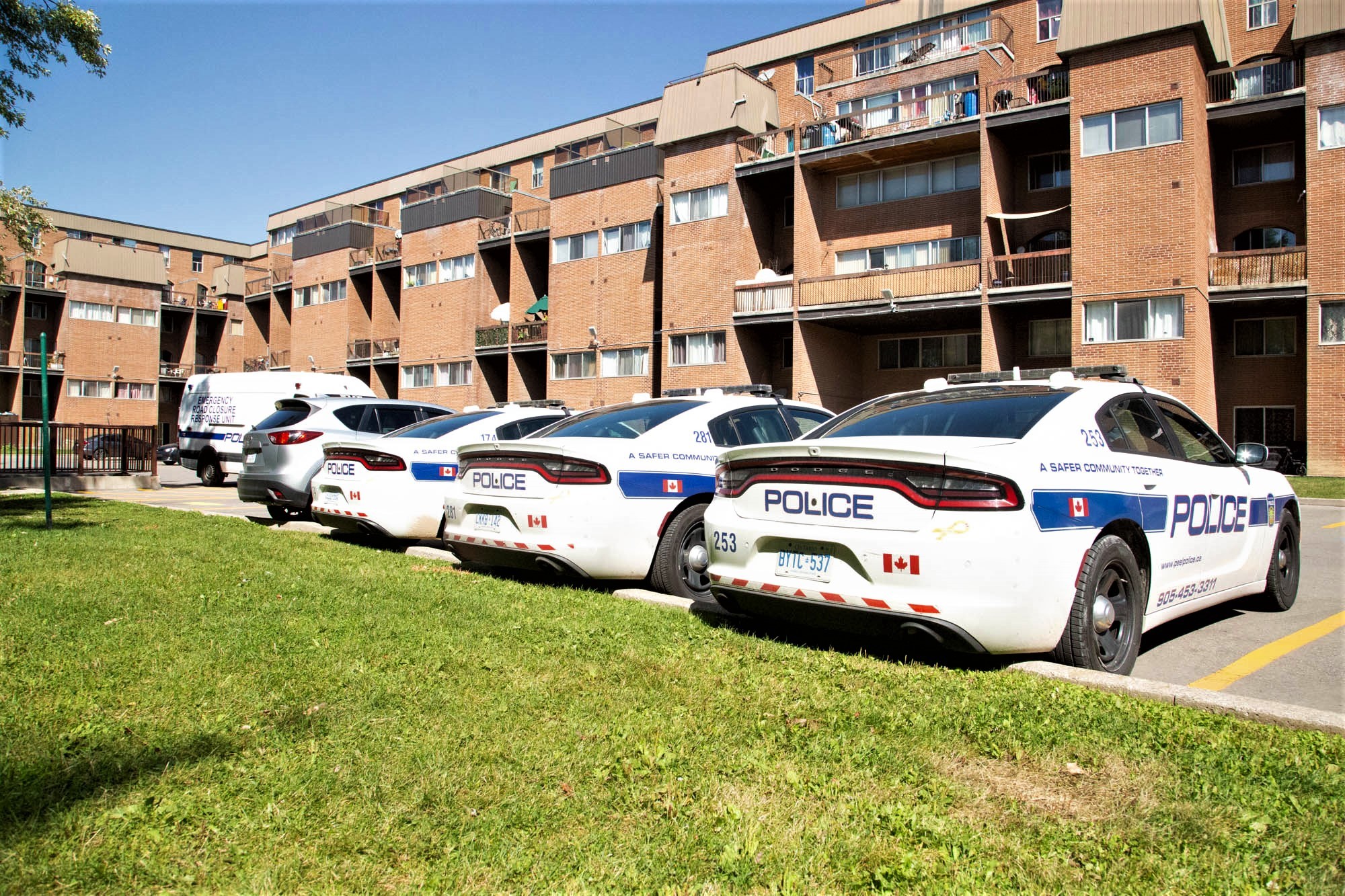
A heavy police presence was still visible Tuesday at the scene of the Saturday mass shooting in Malton
The province made another announcement earlier this year, this time allocating $16.4 million for a “guns and gangs strategy” over two years to address rising violent crime across Ontario, as part of a $65 million crime-fighting funding package from the federal government. The key component is the establishment of new “justice centres” in the province, where work will be done to comprehensively and proactively deal with gang activity, youth crime prevention, effective enforcement and prosecution. Toronto will get two of the justice centres, one will be located in London and one in Kenora, all to be operational by 2020, with more to be established after that. It’s unclear where.
Last month the province announced another $3 million for Toronto police, to purchase and operate an additional 40 closed circuit TV cameras, as part of the force’s gang strategy, bringing the Ford government’s investment to address Toronto’s gang problem to $28 million in a little over one year.
Under the province’s guns and gangs strategy Peel will get a new “bail team” to support hearings and bail proceedings for gun-related charges in the GTA, and better equip those working in the criminal justice system to deal with complex bail issues when suspected gang members are involved. Toronto received a similar bail team in 2018 and since then 378 bail hearings and 43 bail reviews had been conducted, as of four weeks ago, with 64 per cent of the cases getting a detention order for the accused, instead of bail, according to the province.
As part of the federal government’s $214 million commitment to help fight gun use on the streets and gang activity, a five-year national initiative, Ontario was given the $65 million. In June, Bill Blair, the former Toronto police chief who now serves as the federal minister who oversees border security and organized crime prevention, told Parliament that the Ford government had only allotted 17 percent of the funds earmarked to fight gun use and gang activity in Ontario, while such crimes were rapidly increasing. But that was before the $16.4 million announcement by the Ford government last month, which is expected to flow next year.
Mayor Crombie is now voicing her own frustration over the slow pace of funding.
Imagine her mood on Saturday. Less than 24 hours before a huge coronation for Mississauga tennis phenom Bianca Andreescu, coming off Canada’s first-ever tennis singles grand slam title at the U.S. Open, with the eyes of the nation on Celebration Square and the headline writers sharpening their own game for the next day’s papers, the Malton mass shooting happened.
Crombie, who does double duty as mayor and police board member and happened to be the local Ward 5 councillor for Malton before she made the jump to the top office in the city, once again had to offer her residents comfort in their darkest hour. Instead of a feel-good fairy tale continuing to sweep across Mississauga, news of a tragedy ripped around the country. Even the party leaders on the election trail commented directly on the Malton attack that killed 17-year-old Jonathan Davis.
“Let me first share with you that I did have the opportunity to speak to Jonathan’s mother. And of course, she’s living every parent’s nightmare,” Crombie told reporters Wednesday. “And as a mother myself, it’s just crushing. It’s heartbreaking for me as well.”
Crombie wants to know where the guns and gangs funding for her city is.
“Certainly we are looking to other levels of government for assistance. The money has been announced. The problem is, it hasn’t flowed down to the municipalities. In fact, the intake hasn’t even opened up yet,” she said, clearly frustrated. “The application process, to apply for the additional funding, hasn’t been opened up yet. So we are waiting. Our request now to the province is to open up the funding, let it flow. It’s not supposed to be opened up until 2020, but the need exists now. The need exists today – so can you let the funds flow sooner than you expected?”
Crombie said she did not want to point a finger at Queen’s Park or Ottawa, over the lack of funding and the slow pace, as her city reels from the recent tragedies.
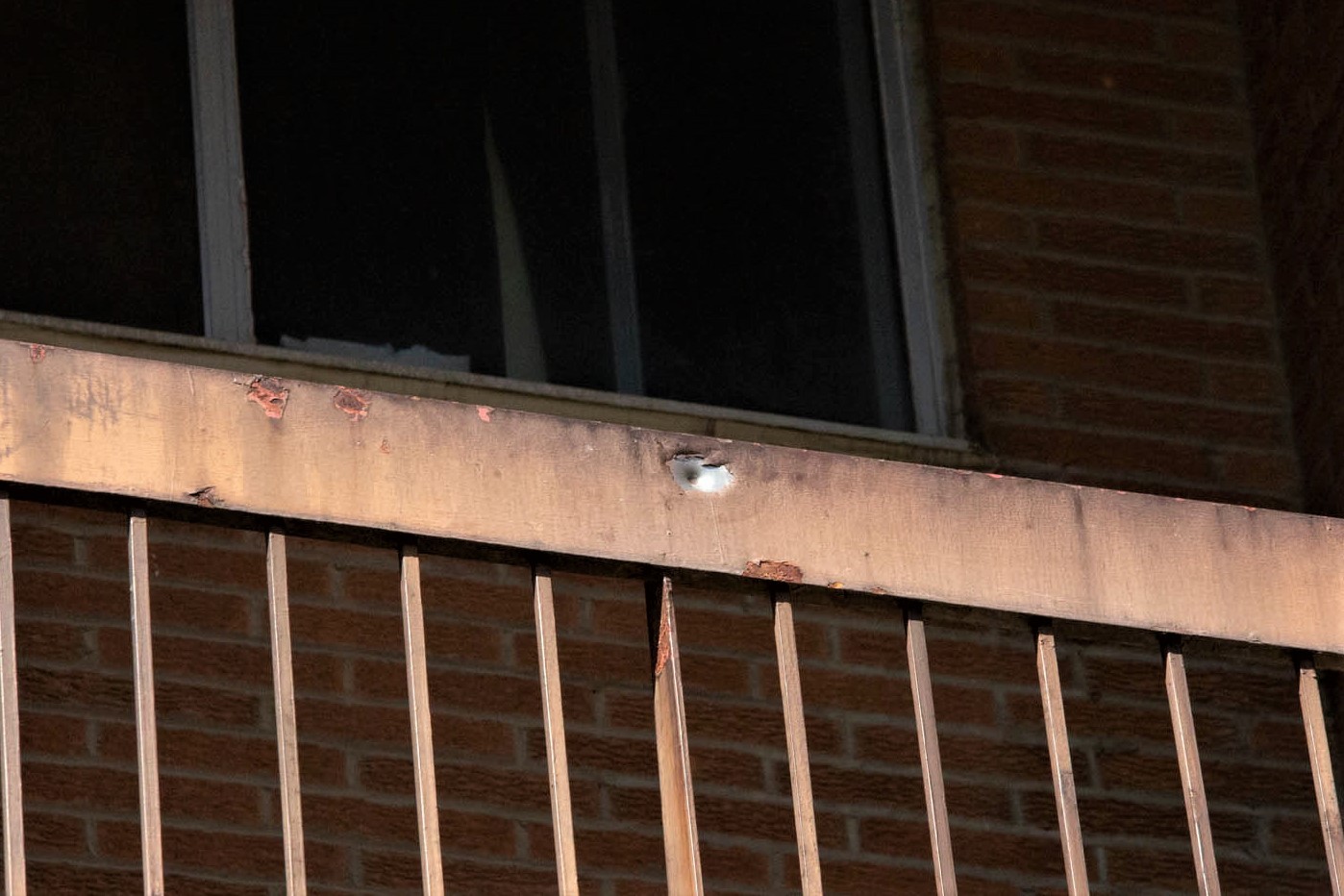
Police pointed out where some of the more than 100 bullets fired struck the Malton apartment complex Saturday
She also mentioned that acting Chief Chris McCord has applied to the province for a $7.7 million grant to assist the force with the mounting problem of gun use on the streets, but the mayor said it’s unclear if that request will be met.
The Pointer asked the Province when municipalities can expect to see the remaining portion of the $65 million federal funding package that was handed over to Ontario.
“In August our government and the federal government announced how this $65 million partnership would support Ontario's strategy to combat gun violence and stop the gangs who prey on young people and threaten the safety of communities,” Marion Ringuette, press secretary for the Ministry of the Solicitor General, responded. “This investment is completely dedicated to this objective.” No detail was provided about when the rest of the money will flow.
The Ministry of the Attorney General also responded to The Pointer Wednesday but did not detail when or if additional funding might reach Mississauga and Brampton.
“(The bail team) in Peel Region will work with police to ensure they have all the evidence necessary to make the strongest case possible when seeking detention in serious firearm cases,” Attorney General spokesperson Jenessa Crognali, wrote in an email.
“We know criminals do not respect geographical boundaries and that is why we are fighting illegal guns and gangs in Peel Region and across the GTA and Greater Golden Horseshoe through the establishment of a GTA/Greater Golden Horseshoe (GGH) Gun and Gang Fund that will support joint forces operations that target organized crime areas that fuel gang operations, such as drug, gun and human trafficking, and provide intelligence analysis.” She said the province will continue funding its Gun and Gang Support Unit and the Gun and Gang Specialized Investigations Fund.
“We will continue to work with Peel Regional Police, prosecutors and all justice and community partners to stand up for law-abiding citizens and stop gun violence from shattering more lives.”
The province’s assuring words are little comfort to those in Mississauga and Brampton being torn apart by gun violence right now.
Crombie wasn’t the only Mississauga council member who expressed frustration over the darkening reality gripping Malton. Carolyn Parrish, the current Ward 5 councillor, told The Pointer she had a “meltdown” when she learned the Malton Community Police Station was being closed, prior to its shuttering last year. She provided emails that show Evans was not willing to pay the high rent at the location, which closed in February of 2018, despite the councillor’s efforts to change the former chief’s mind.
Parrish says the area has been chronically under-policed and is now demanding a stand-alone division for Malton. It’s a move that Brampton Councillor Gurpreet Dhillon, who grew up in Malton, is now publicly supporting.
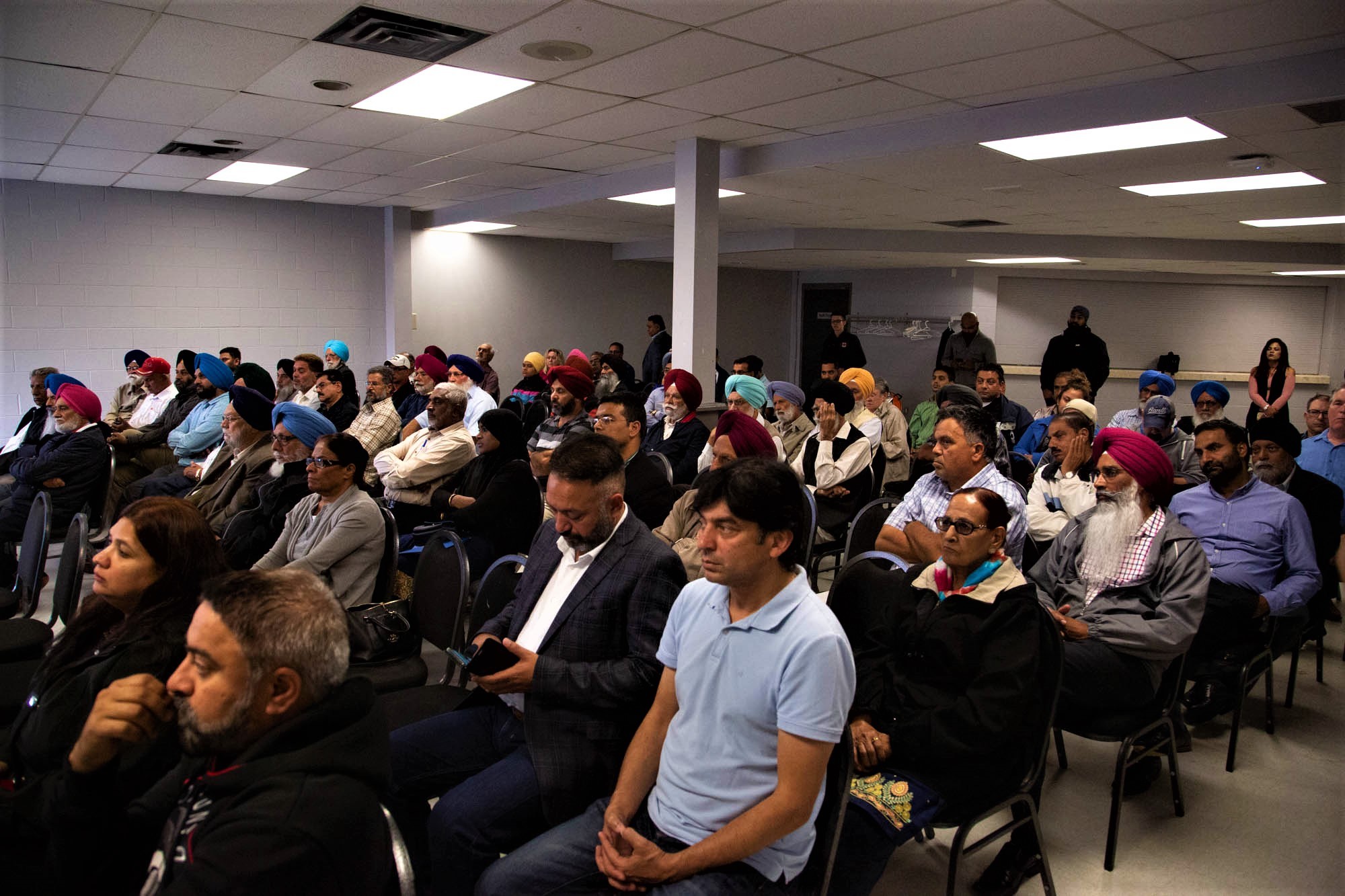
A Brampton townhall on public safety this past Sunday
At a community townhall on Sunday in Brampton to address the rising gun use on city streets, organizers of the packed event took out their frustration on federal politicians. All five of the Liberal candidates, four of whom are seeking re-election, were invited, according to the organizers, but not one showed up.
Jotvinder Sodhi called them “two-faced”. “Maybe they have other priorities over the public’s safety.”
Frustration will likely continue to mount until answers are found.
Email: [email protected]
Twitter: @JoeljWittnebel
Submit a correction about this story


